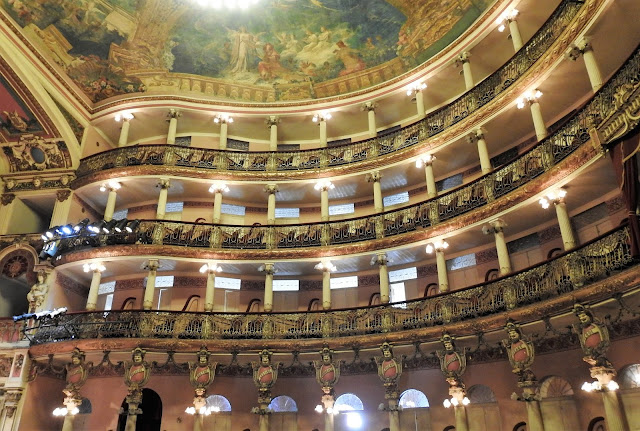Manaus is on a tributary of the Amazon. The Rio Negro is clearer (but dark tinged in
color), warmer, and more swift moving.
When the two meet, you can see the difference in the two rivers. So, today the early morning was devoted to
the meeting of these two waters.
We’ll be arriving in Manaus about 10am (9am back home).
 |
| It's a beautiful morning. There are thunder clouds around, but the sun is trying to break through. |
 |
| With such a wonderful and open horizon, the clouds become a thing of beauty. |
 |
| The ship is proceeding up the Amazon River to the Rio Negro. There's so much debris in the Amazon. |
 |
| A small boat comes by. It's interesting to see that the guy is taking a picture of us with his phone. |
 |
| Lots of debris is on its way down the river to the Atlantic Ocean. |
 |
| I'm glad the debris doesn't interfere with the movement down the river. |
 |
| Whole patches of grass have been washed away from hills during the rainy season. |
 |
| The shipping is getting close to Manaus. You can see more homes and businesses. |
 |
| We're moving into the Rio Negro. Temperature, clarity, and speed are different between the two rivers. |
 |
| The ship is moving into the Rio Negro. There's very little debris. There are small white caps where the speeds of the water flow is different. |
 |
| So long Amazon River. The ship will return from the Rio Negro after two days in Manaus. |
 |
| The ship will arrive in Manaus at 10am. I will be taking a boat tour and will post more photos later today if possible. |

























































